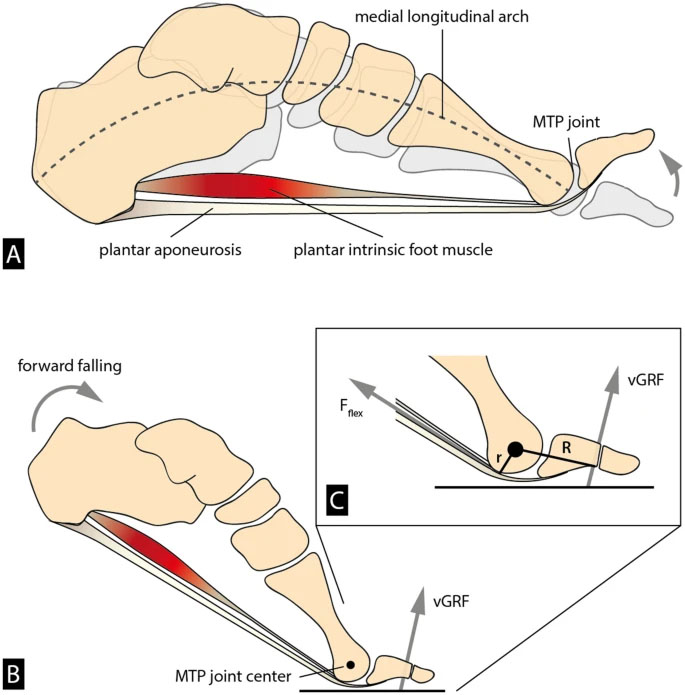Modern sports shoes allow easier foot movement but could weaken muscles of the foot
One of the designs of modern sports shoes is the toe spring, upward curvature of the sole at the front of the shoe. The toe spring elevates the toe box dorsally above the ground and thereby holds the toes in a constantly dorsiflexed position.
The toe spring holds the toes, so they move less during walking and running. It is thought to help the forefoot roll forward during the propulsive phase of walking, between when the heel and the toes leave the ground. The benefits in terms of mechanical work of this rolling motion have already been demonstrated, where this rolling motion appears to reduce the center of mass work.
A study investigated how the toe spring affects the way the human foot functions during gait, and how it may affect the foot’s vulnerability to injury. The study published in Scientific Report, was a controlled experiment in which participants walked in specially-designed sandals with varying curvature in the toe region to simulate toe springs ranging from 10 to 40 degrees of curvature.
Using biomechanical measurements, the researchers found that toe springs alter the joint moments and work at the toes. The greater the upwards curvature, the less work the foot muscles had to perform during walking. In other words, the foot muscles have to do less work to stabilise the toe joint when you lift up your heel and push forwards.
The authors hypothesised that regularly wearing shoes with toe springs could inhibit or de-condition the force-generating capacity of intrinsic foot muscles. While the direct consequences of weak foot muscles are not fully known, it is likely that they could increase susceptibility to flat foot and associated problems such as plantar fasciitis.
The ability to dorsiflex the toes relative to the rest of the foot at the metatarsophalangeal (MTP) joints during the propulsive phase is one of the key evolved features that enable humans to walk and run bipedally effectively and efficiently. (A) Dorsiflexion at the MTP joints helps stiffen the foot through a windlass mechanism. During this action, dorsiflexion of the toes creates tension in the plantar aponeurosis that tends to pull the calcaneus towards the metatarsal heads. This motion creates an upward force in the longitudinal arch. (B) During propulsive phase, the metatarsal heads and the distal phalanges are the only points of contact with the ground on the trailing leg and hence become load-bearing. As a result, the ground reaction force (vGRF) acts on the distal phalanges at a distance R from the MTP joint center to generate a moment that causes the MTP joints to dorsiflex. (C) The intrinsic flexor muscles are active (Fflex) at the end of stance phase, balancing the dorsiflexion moments at the MTP joints (with r as the lever arm of the acting flexor muscles). From Sichting et al. 2020. Creative common https://www.nature.com/articles/s41598-020-71247-9


